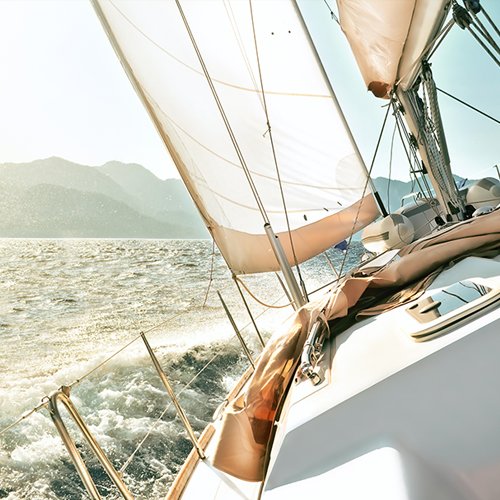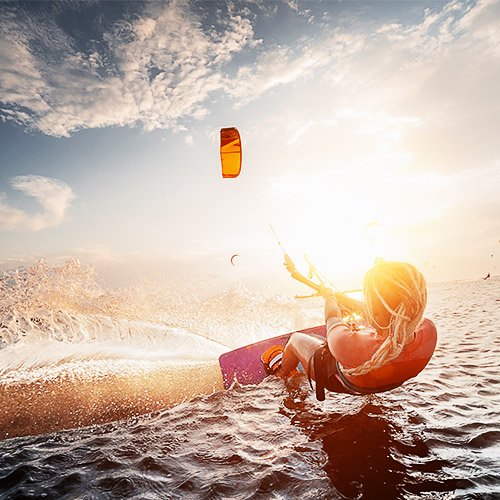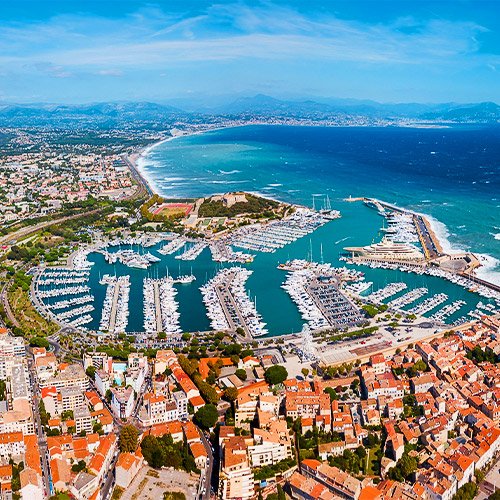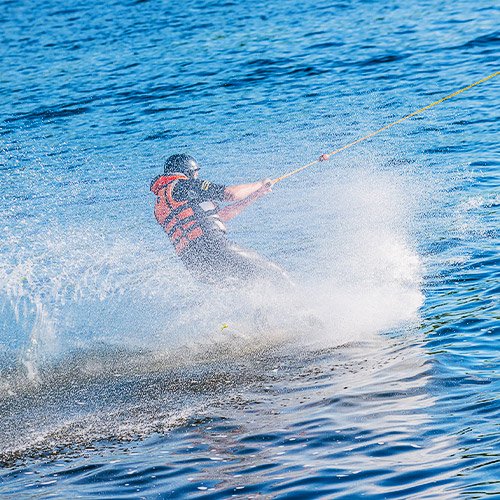We already explained the anchoring techniques in our article How to anchor – 7 Tips, and now it’s time to understand more how anchors work depending on their holding power, shape, weight and seafloor conditions.
Almost all anchors share some of the same qualities, but before you decide on the anchor type for your yacht, it's important to know the components that build up most anchors. It’s important to know how your anchor works, because it will make your anchoring safer and more enjoyable.
Anchor components
As you probably already know, anchors are usually composed of 5 parts:
- The shank, the part of the anchor which is directed in a way that guides the anchor on where to set.
- The crown, is the central part of the anchor, holding all parts together.
- The flukes, are the parts that get buried in the seafloor, and maybe the most important part of the anchor, because they sustain the anchor in position.
- The stock, is the piece that connects the crown to the flukes.
- The tripping ring (head), it’s an optional element of an anchor, used with a tripping line, allowing to release and break the anchor out.
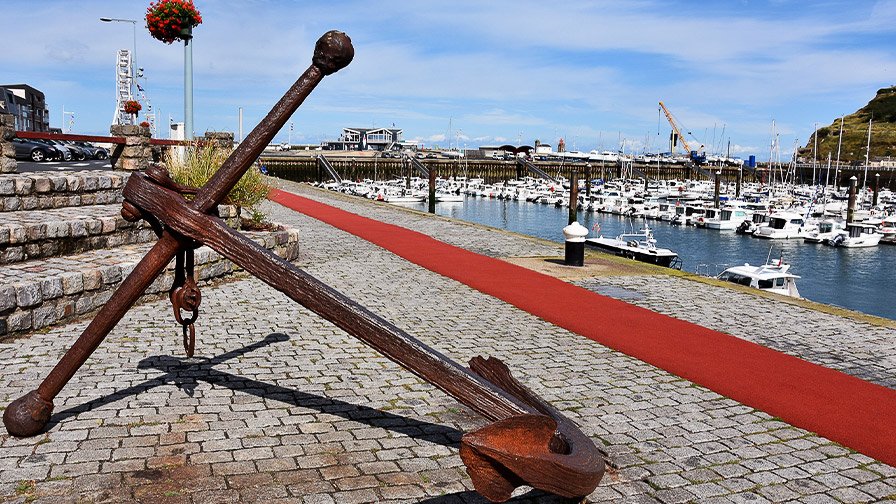
Anchor components
capetanos.comAnchor properties
Choosing the right anchor should be done based on some factors like weight, holding power and seafloor conditions. As you will see, anchors come in a variety of sizes and shapes, just like the boats they anchor. The reason why there are so many variants comes down to the type of boat and size you own, weather conditions, and depending on the area you want to sail, the bottom condition.
Let’s break it down to what makes a good anchor for you:
- Anchor weight - is very important because a lighter one will hold your boat in good weather, but you will need much more weight in bad weather or an emergency situation. So, in this case, bigger is better.
- Holding power - is what anchors are rated by, meaning that you need to choose an anchor based on the pull force it must withstand to hold the boat in place. Most anchor manufacturers give recommendations for the anchor’s weight by either the LoA or a combination of length, water displacement and windage.
- Seafloor conditions - are very important when choosing the right anchor, because the holding power and weight are only as good as the anchor’s ability to penetrate the seafloor. For example, anchors penetrate easily the hard sand bottoms, which offer consistent holding power. If you drop the anchor in mud, the anchor must penetrate to reach a harder secondary bottom material, so it will be harder than in sand. In grassy seafloors, the anchor weight is more important than design, in order to hold your boat in place.
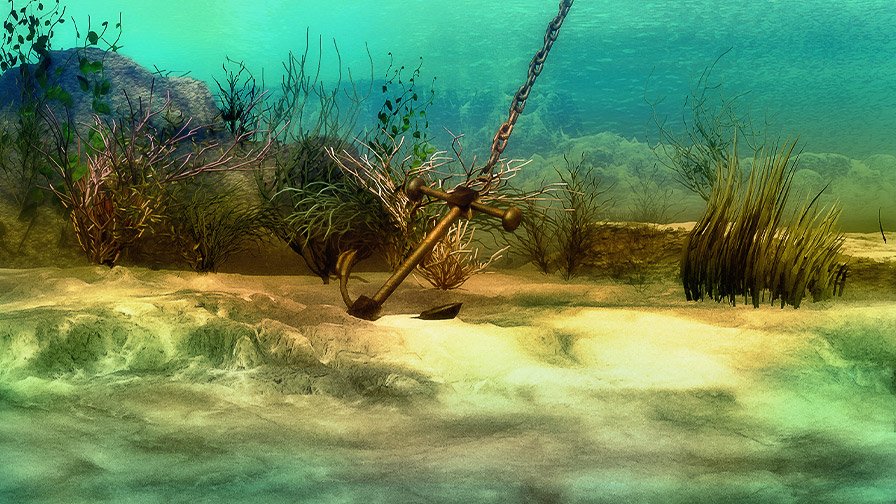
Anchor properties
capetanos.comTypes of anchors
When it comes to anchor types, you should know that you will not find an anchor that does it all, there are pros and cons on all anchor types, and we’ll discuss them below. Even more, you should know that using two different anchor types is very beneficial, if you sail in different seafloor areas.
1. Fluke, or Danforth anchor, is one of the top choices for most of the boats with overall lengths of 30 feet or less. This type of anchor provides sufficient holding power compared to its size.
Pros:
- they fold flat, so they are easy to stow;
- the stock buries itself after the flukes dig into the seafloor;
- best to use in sand or mud seafloors.
Cons:
- not recommended for rocky or grassy seafloors;
- loose mud or clay prevent seafloor penetration.
2. Plow anchor, will set very fast due to its low centre of gravity and self-righting geometry. This type of anchor has almost the opposite characteristics of the fluke.
Pros:
- the current makes it bury for a solid hook;
- its shape makes it reset easily;
- best to use in rocky and grassy seafloors;
- high holding power in windy conditions.
Cons:
- low holding power in sandy or muddy seafloors.
3. Claw anchor, are the best choice on open waters and for windy conditions.
Pros:
- great holding power;
- holds in almost all types of seafloors.
Cons:
- struggles to bury deeply in the seafloor.
4. Grappling anchor, are designed mostly to be used on small boats, kayaks, canoes and skiffs.
Pros:
- the compact design makes them fold up for storage in small places.
Cons:
- they lack in holding power.
5. Admiralty anchor, mostly used on large ships and is known for the weight that’s holding the boat, not the shape.
Pros:
- best to use on stony and grassy seafloors.
Cons:
- not so efficient in sandy or muddy seafloors, because of the narrow paws;
- assembly and dismantling of the anchor are necessary.
6. Rocna anchor, is a multi-purpose anchor that can be used, and holds in almost all types of seafloors.
- can be used in sand, mud, clay, grass and kelp;
- remains stable and buried and does not roll out on reversal;
- self-launches and self-stows on the majority of bow-rollers, with the greatest possible reliability.
Cons:
- if mud or sand accumulate on the fluke, it might fail to reset.
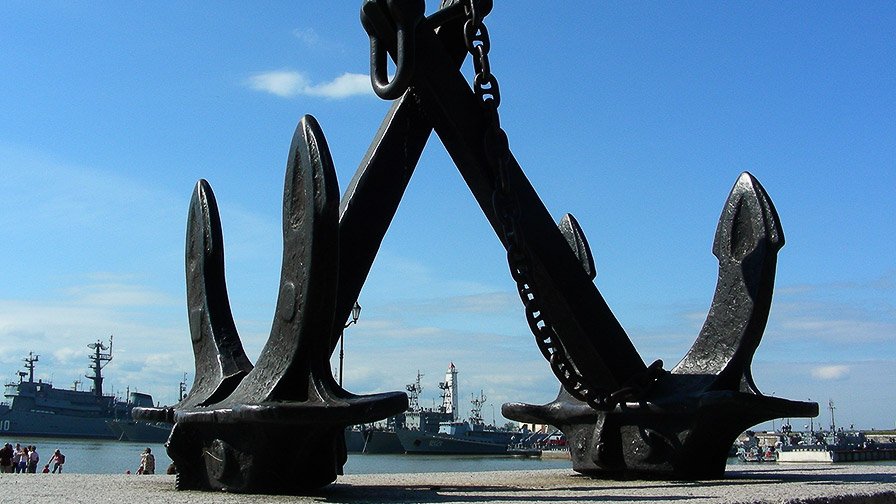
Types of anchors
capetanos.comAs you can see, there are lots of amazing anchors out there which could potentially be a great fit for you and your yacht. A clear understanding of what makes a good, high-quality anchor, means that you’ll be able to make a more educated choice when deciding which anchor is best for you and your sailboat.
Anchoring in a nice, peaceful bay or right outside of a marina avoiding all the hubbub can be an amazing feeling. It’s an even better feeling knowing that your yacht is securely fastened using the best anchor, so that you don’t start floating away when the tide or wind start to shift.
Below you can find the list with some of the retailers selling anchors:

